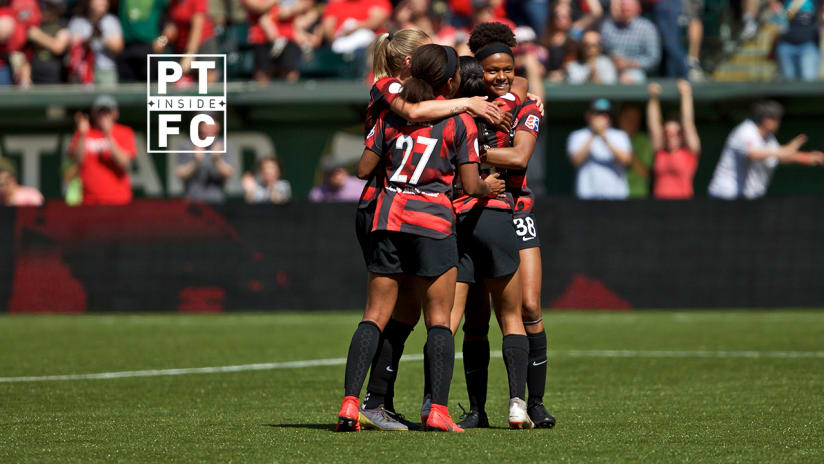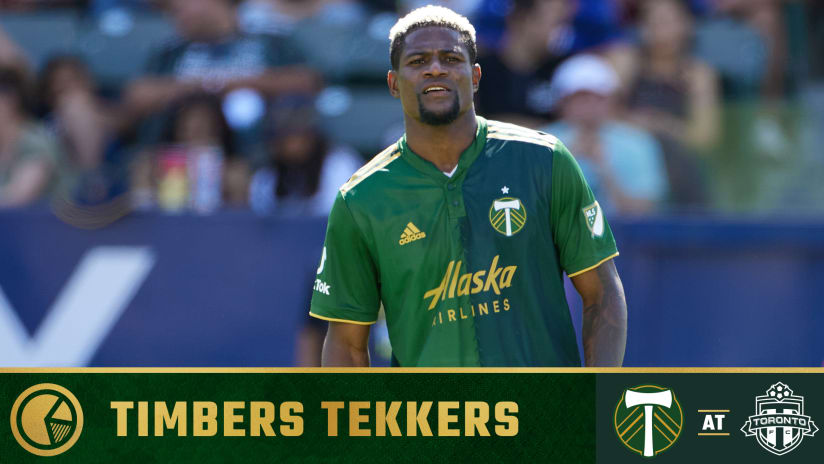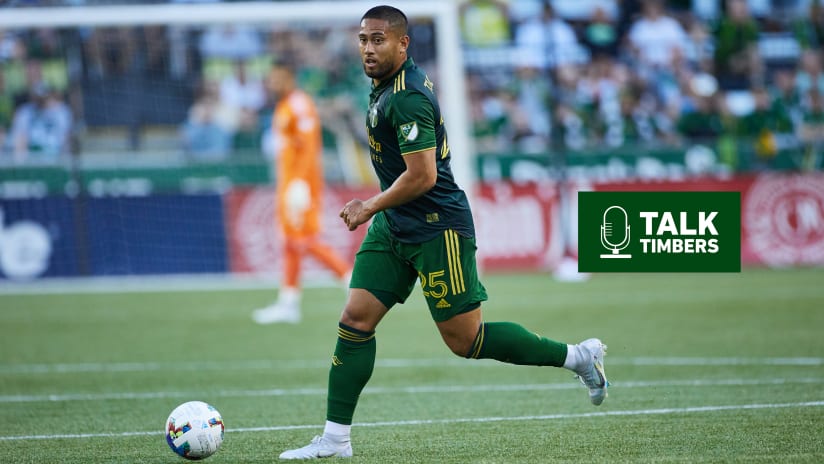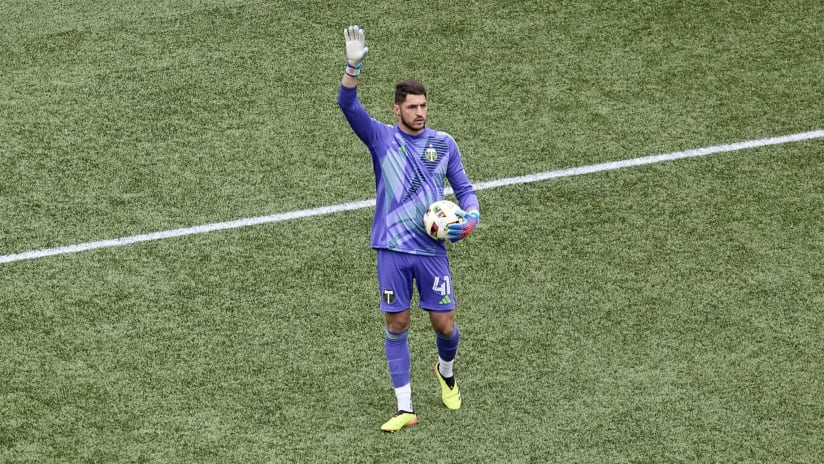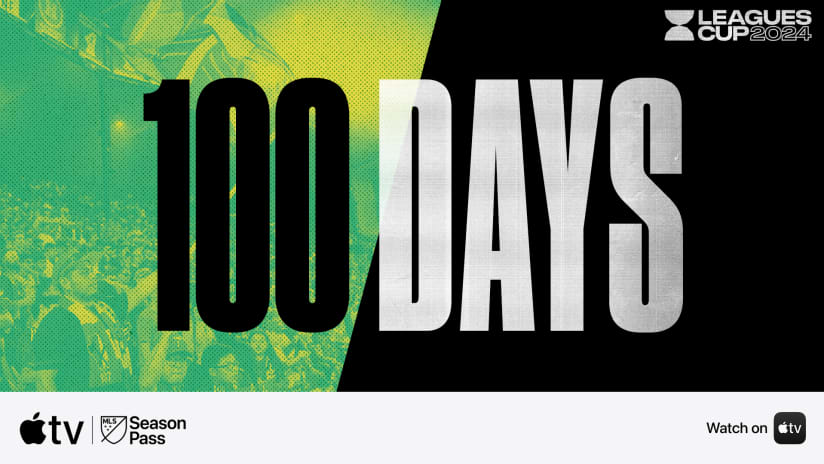When Portland Thorns FC head coach Mark Parsons says things like Saturday’s draw was, “our first point in Carolina in three years” – as he did after this weekend’s result – he’s speaking to an expectation, one that’s been built over multiple seasons of trying to break through against the North Carolina Courage. When thinking about where his team can get points over the course of a season, Parsons has to see the annual trip to Cary in terms of history. It would be nice to get a point at Sahlen’s Stadium, but realistically, the Thorns might leave WakeMed Soccer Park with zero.
That may explain why Parsons was so happy with the team’s result on Saturday, when a first-half goal from Midge Purce buoyed the team to a 1-1 draw against the league’s defending champion. But the coach’s comments may also hint at a framework through which to evaluate not only his team’s start but how well early NWSL team has met their early obstacles.
Based on how teams have performed in the past – how difficult or easy it’s been to get points in certain places – we can look at this year’s results and ask, “are those more points than the could have expected?” If teams usually get 1.4 points at a certain location, we have some idea. A win would be good; a draw, less so.
It’s a way to not only take strength of schedule into account so early in the season but also go beyond the feeling of a good start. It’s a way to rely on some actual numbers, and although (as we’ll see) those numbers are far from definitive, it gives us more to go on than “that feels like a good point.”
Implicitly, when Parsons described Portland’s history of struggles in Cary, he was going through the same process, albeit without showing his work. Based on history, the Thorns should have been expected to get zero points on Saturday against the Courage. And the Courage, based on how they’ve preformed over the years, should have been expected to get far more than one point, regardless of the opponent. Leaving Carolina instead with one point, the Thorns were, in a way, one point to the good.
The point of comparison Parsons chose, though, is one we’re going to change a little, mostly because using one team’s isolated experience against an opponent introduces a number of potential problems. Beyond mere sample size issues that make injuries, weather, or a random penalty kick decision weigh larger than it should, there are strategic considerations teams develop for each other. The Thorns and Courage are a great example. In a universe where we’re just talking about Portland and North Carolina, that’d be a more valid path, but since we’re going to talk about the Thorns’ broader start, something that brings in a league-wide view, we need more perspective.
In fact, perspectives, plural, is probably the right way to go. Teams are so fluid, you can’t just solve the sample-size problem by taking a club’s entire history and using that as a reference point. After all, what do the high-flying days of Reign FC’s years in Seattle have to do with who they are, now? At the same time, the now-ness of 2019 doesn’t offer enough games to make this year’s number reliable. Is it really fair to expect the Thorns to stay perfect at home, or the Courage to win one game for every four they draw? (Yes, North Carolina is currently 1-0-4 at home.)
Below, we take three different views: short; medium; and long. We look at 2019 alone, then add 2018’s numbers (2018+), then add 2017 (2017+). We see what, based on location of the game, might be a reasonable point expectation for that match, based on how the home team typically performs.
(That, again, is a sample-size thing. Home teams get to play 12 games a year in their given location. If we narrowed it down to how those teams play against particular visitors, that sample all of a sudden, for a given season, gets reduced to one or two games.)
For example, on the top line, below, we see the Orlando Pride hasn’t taken any points at home this season – meaning the Thorns’ two wins there, from a 2019 perspective, didn’t give them any points others haven’t earned. Everybody’s winning in Orlando. In the past, though, Orlando City Stadium has proven a slightly tougher venue, meaning if you prefer a longer-term view, Portland’s wins over the Pride look more valuable:
Game |
Pts |
Exp. pts
(2019) |
+/- |
Exp. pts
(2018+) |
+/- |
Exp. pts
(2017+) |
+/- |
|---|---|---|---|---|---|---|---|
at Orlando (2-0) |
3 |
3.0 |
0.0 |
1.9 |
1.1 |
1.5 |
1.5 |
at Chicago (4-4) |
1 |
1 |
0.0 |
1.1 |
-0.1 |
1.0 |
0.0 |
at Sky Blue (2-2) |
1 |
2.5 |
-1.5 |
2.4 |
-1.4 |
1.9 |
-0.9 |
at Orlando (3-1) |
3 |
3.0 |
0.0 |
1.9 |
1.1 |
1.5 |
1.5 |
at Washington (1-3) |
0 |
0.3 |
-0.3 |
1.6 |
-1.6 |
1.7 |
-1.7 |
at Sky Blue (1-0) |
3 |
2.5 |
0.5 |
2.4 |
0.6 |
1.9 |
1.1 |
vs. Chicago |
3 |
3.0 |
0.0 |
1.8 |
1.2 |
2.2 |
0.8 |
at North Carolina |
1 |
0.8 |
0.2 |
0.5 |
0.5 |
0.4 |
0.6 |
<b>Totals</b> |
-1.1 |
1.2 |
3.0 |
The numbers, above, hint how you see Portland’s start may depend on how far back you consider data to be relevant. If you only want to look at 2019’s results, the Thorns haven’t gotten as many points as you’d expect. They’re 1.1 points to the bad. But that data is pretty noisy, right now. Things like Orlando’s, Portland’s, Sky Blue’s and Washington’s home records are destined to regress to back to a more normal number. That’s why people might prefer the “2018+” number – something that references last and this year’s results – while some may yet prefer “2017+”. That last column introduces a different type of “noise,” though. Teams have changed a lot since that season.
That’s why this data may be less valuable in isolation, looking at only one team’s numbers, than it is when comparing teams against each other. What does a positive 3.0 points based on 2017’s point of reference mean? In one sense, it’s three points more than Portland should have expected, but from another point of view, does that number even matter if you don’t know how other teams, by the same standard, are performing?
So, we looked at the other teams. For every result every team has posted in the 2019 season, we compared it to history. We looked at how other teams have performed in those places and came up with the same crude assessment that we did for the Thorns. How many points is a team “to the good?” How does that change as we broaden our perspectives and use more data?
Team |
2019 |
2018+ |
2017+ |
|---|---|---|---|
Chicago |
1.0 |
3.4 |
0.5 |
Houston |
3.3 |
1.0 |
2.3 |
North Carolina |
-0.2 |
0.5 |
-0.9 |
Orlando |
-3.2 |
-5.8 |
-8.2 |
Portland |
-1.1 |
1.2 |
3.0 |
Reign FC |
-0.9 |
-2.9 |
-2.4 |
Sky Blue |
-1.3 |
-4.3 |
-6.4 |
Utah |
-0.1 |
2.9 |
3.3 |
Washington |
-0.7 |
4.2 |
5.5 |
The numbers here are pretty all over the place. They reflect the idea that we don’t know what to think of the Washington Spirit, yet. Are they good as they’ve been so far, this season? Or should some of their history be considered? I’m not sure there’s a right answer to that question; it’s more that it establishes a range of options. The truth might be X; it might be Y; or it might be somewhere in between.
By this standard, the Houston Dash are getting more points than you’d expect, largely because they sprung a big upset in Utah. The 2-1 win Houston took at Rio Tinto Stadium on May 11 are the only points Royals FC have dropped at home all season. At the other end of the spectrum, Orlando has been just as disappointing as Houston’s been good, largely because they’re performing so far below their historical norms.
As for the Thorns, there’s some back-and-forth in the numbers. For the 2019, they’re negative. For the other two years, they’re positive. Overall, though, when you look at how the team compares to their competition, they’re pretty much middle of the road: seventh out of nine this year; fourth by the “2018+” standard; third by the “2017+” mark.
Taken together, the Thorns seem near the level we should have expected from them, if this way of looking at things holds any water. I'm not sure it does. It's certainly a more objective way of looking at things, moving us away from relying on instinct or feeling, but as a standard that actually means something? It probably doesn't have much more value.

